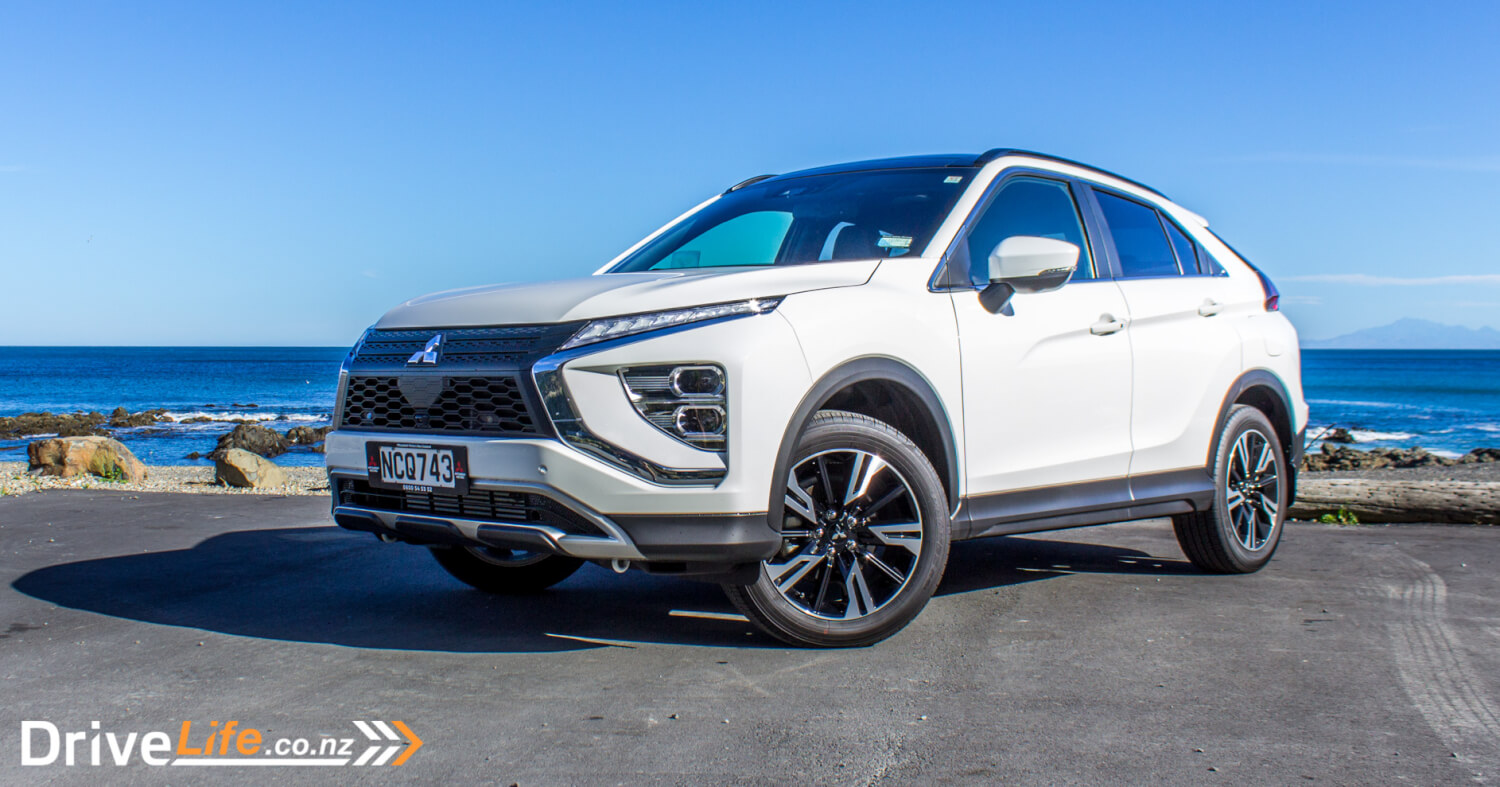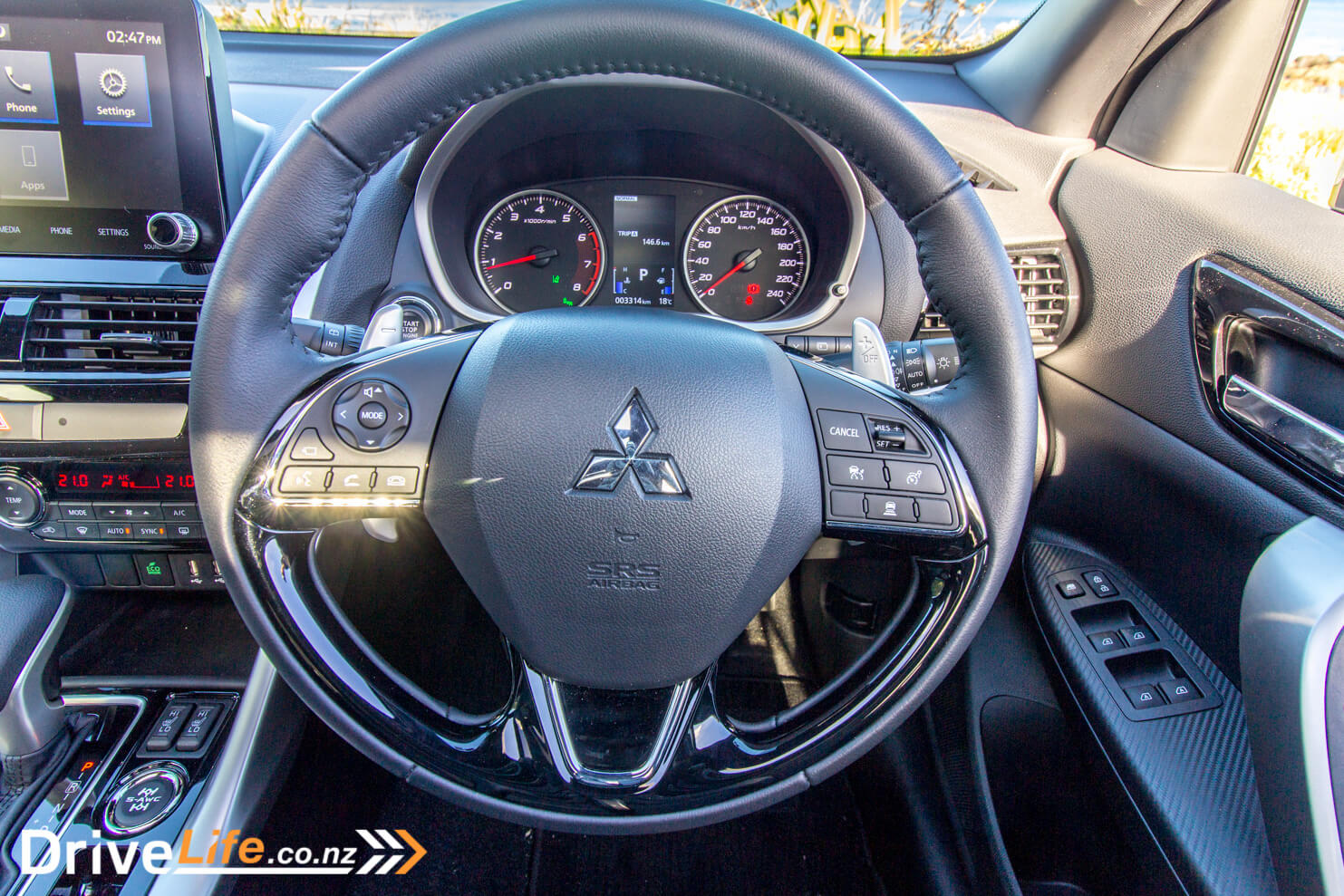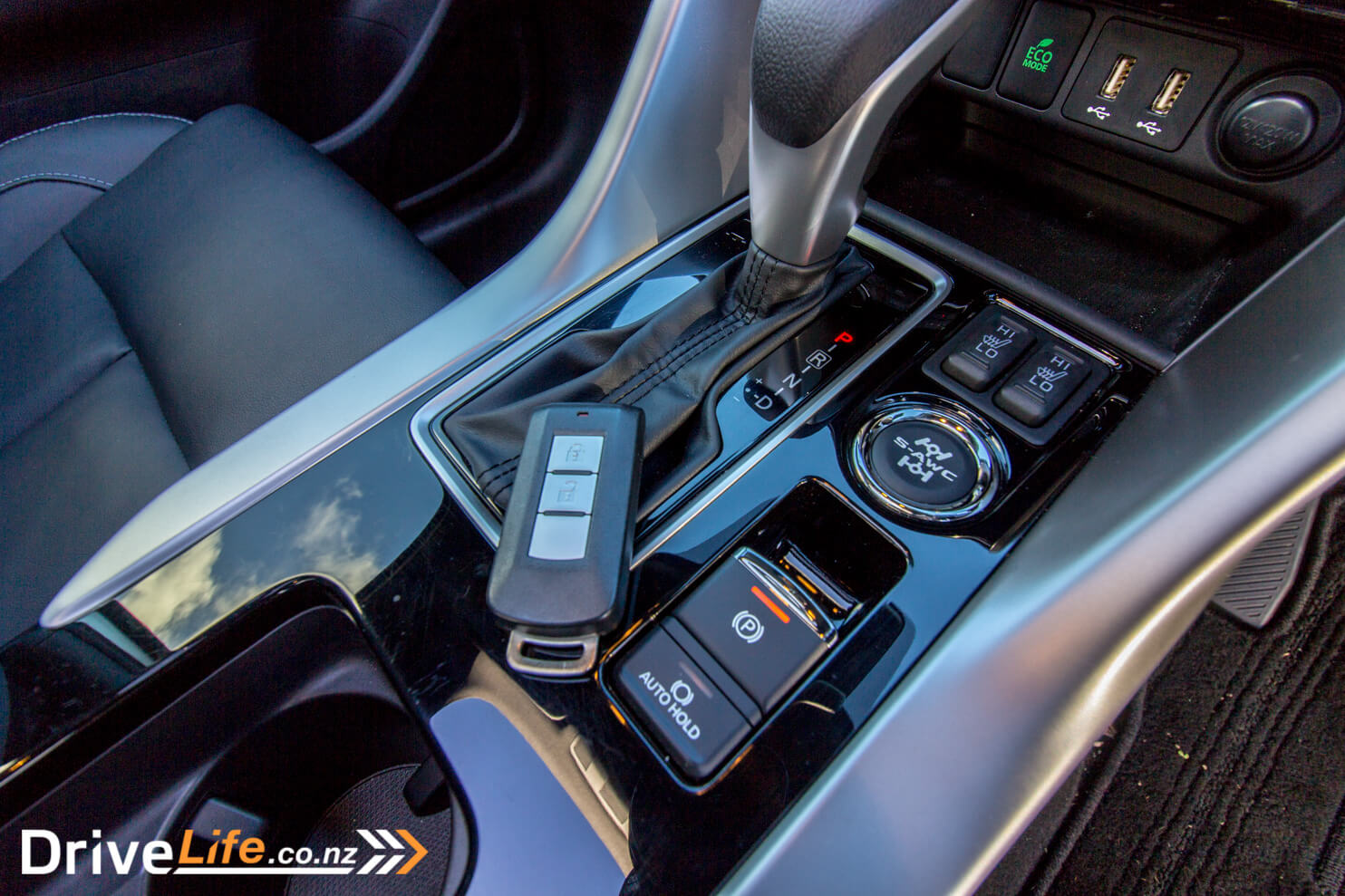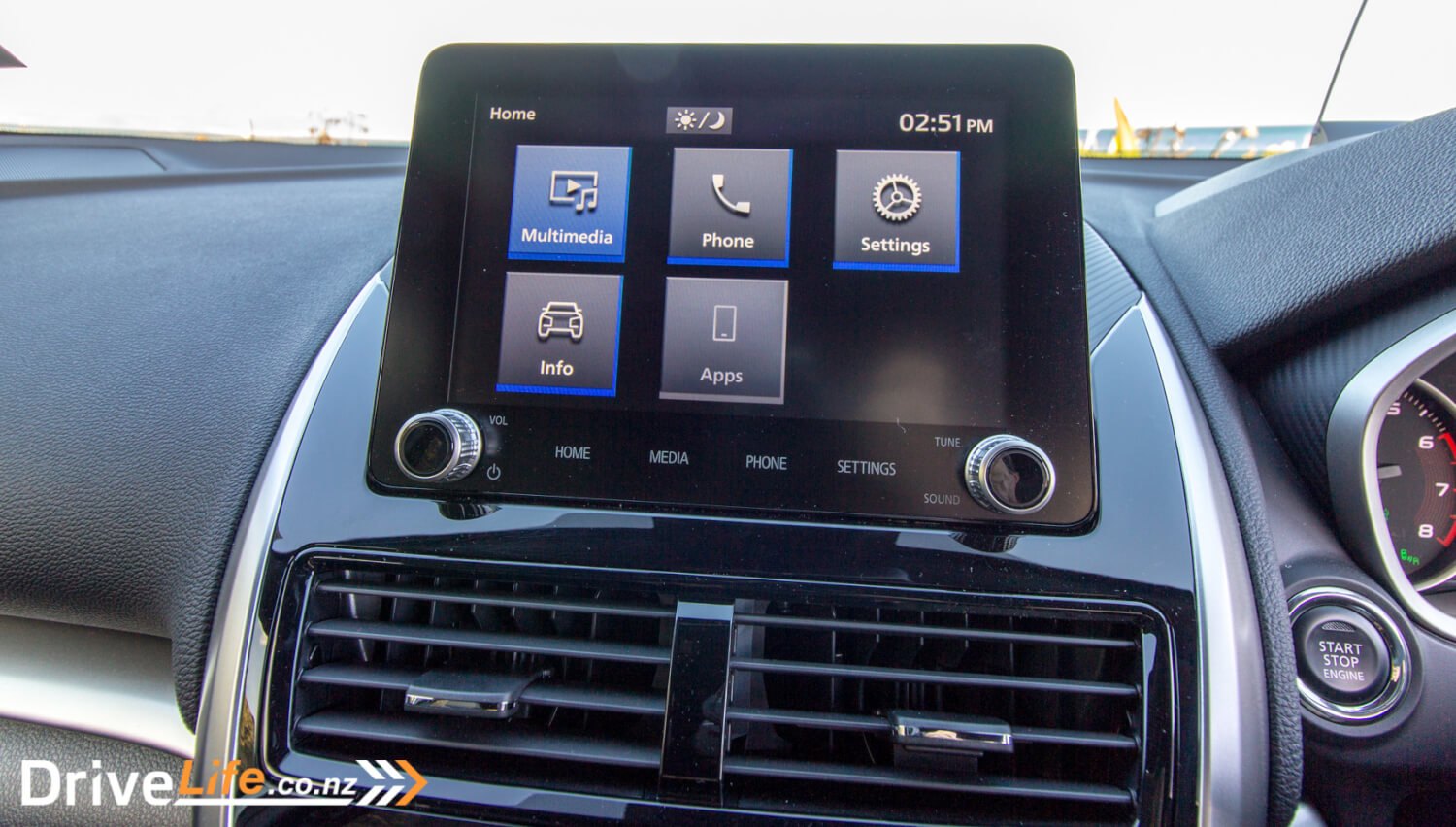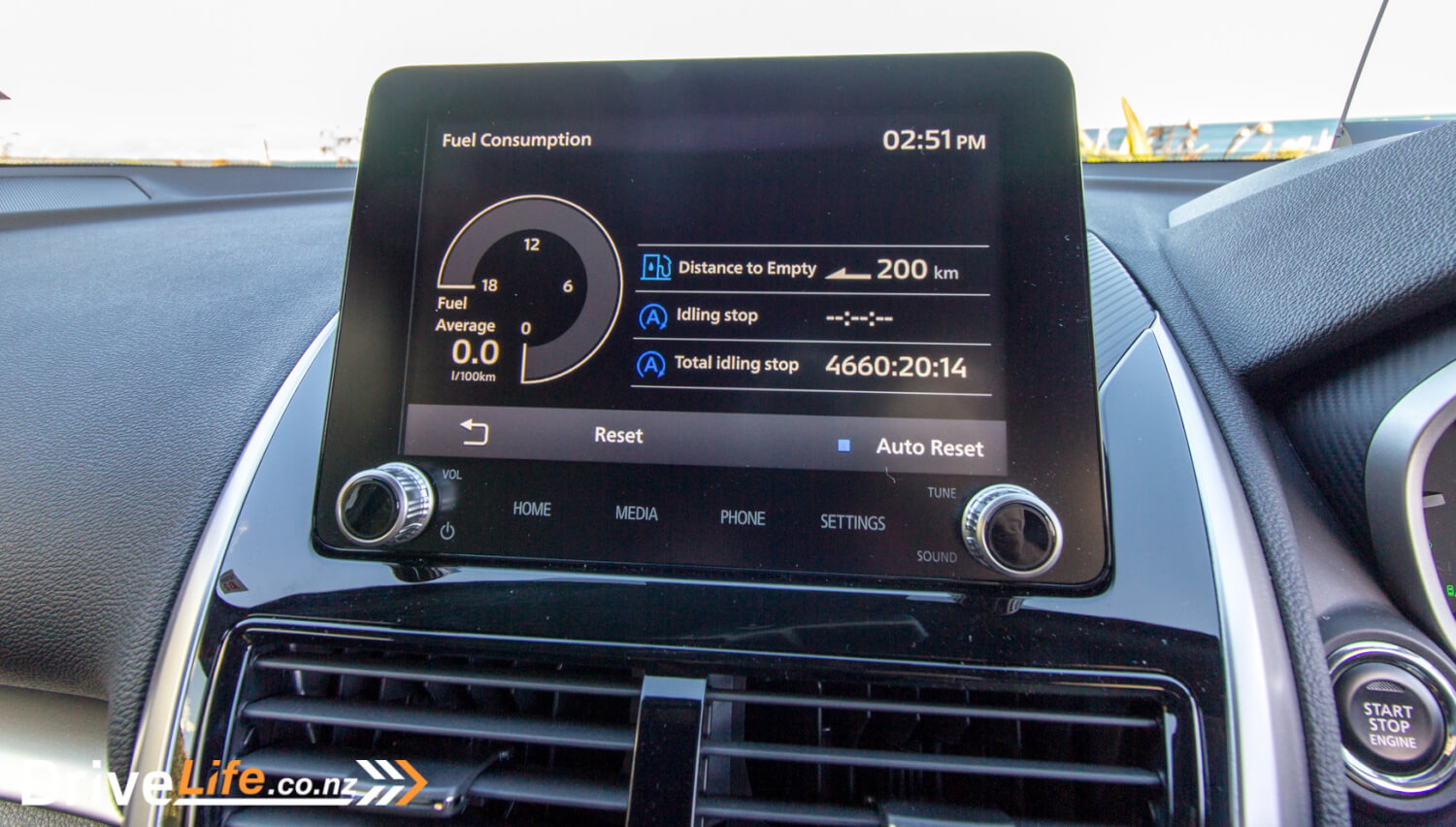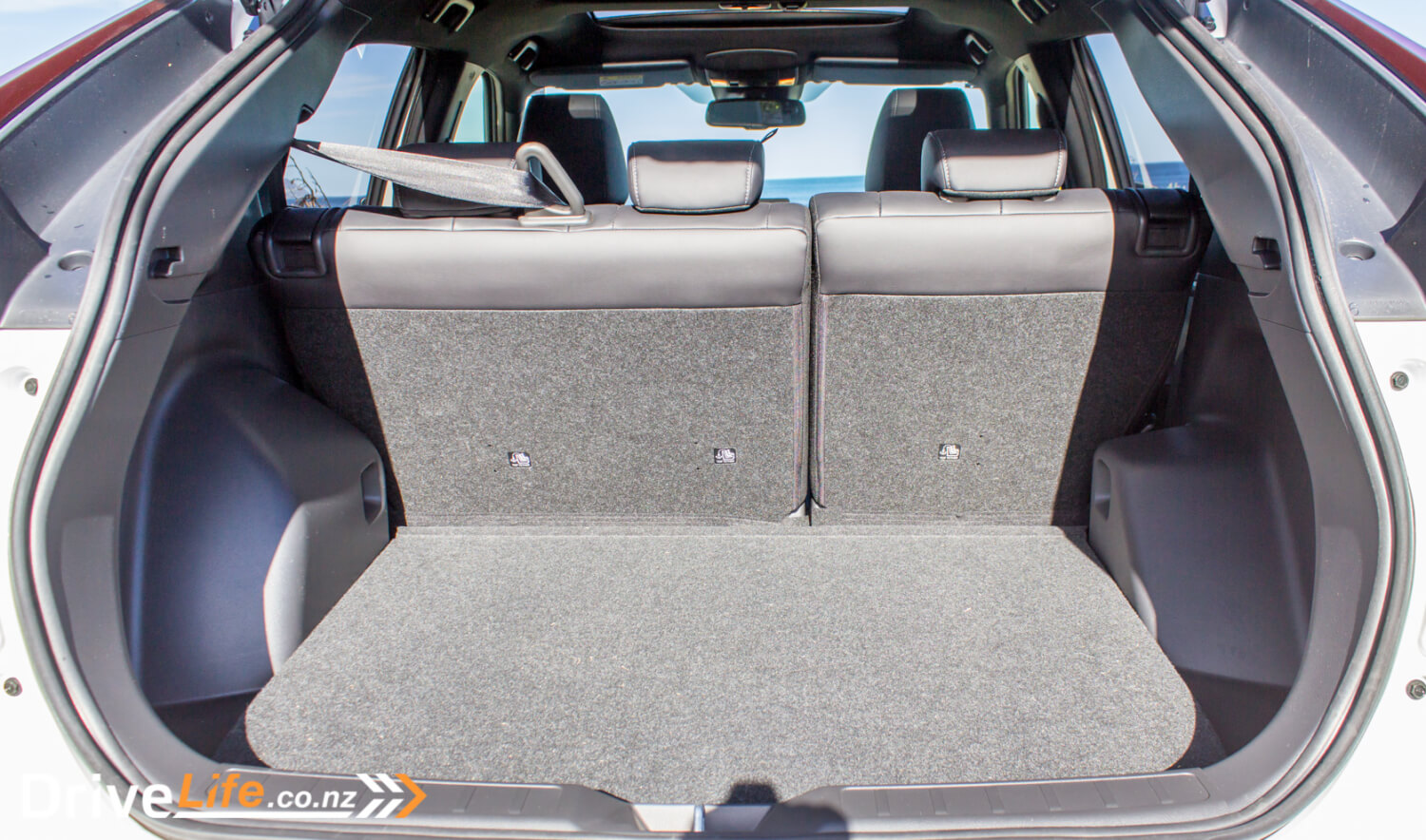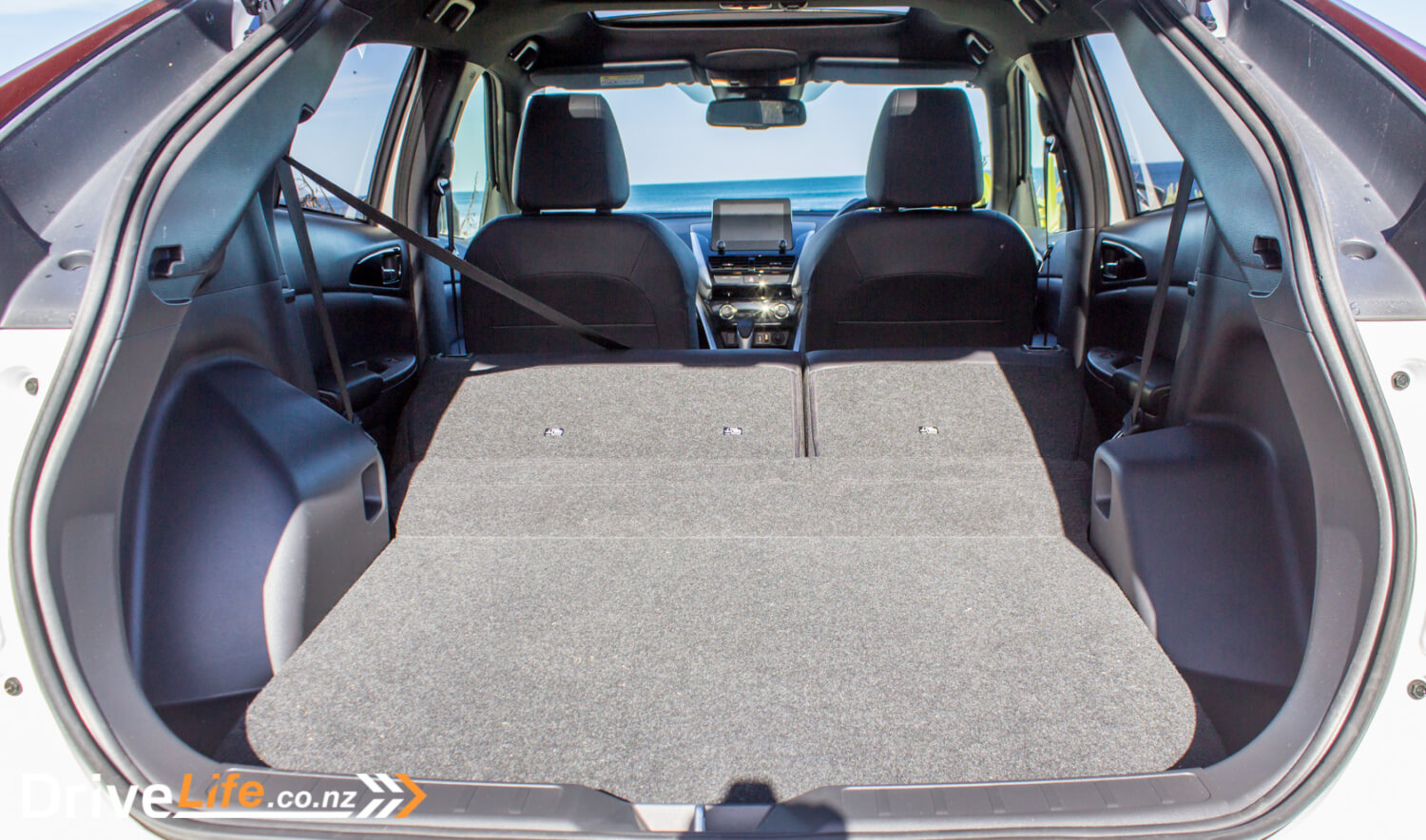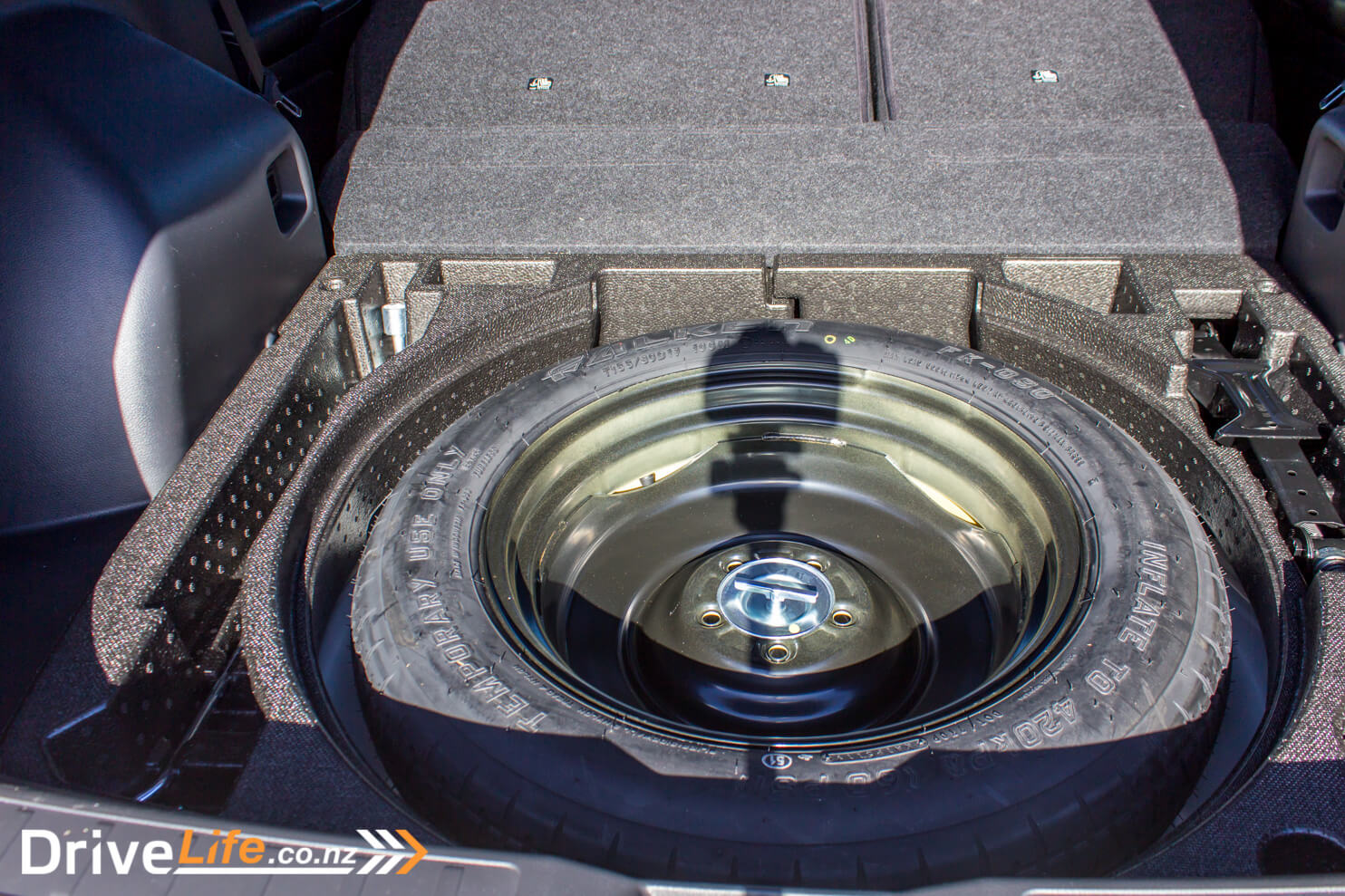When I heard that Mitsubishi was reviving the Eclipse name, I got excited. Although it never reached our shores, the Mitsubishi Eclipse was a performance coupe, and a hero car in 2 Fast 2 Furious. It was perfect for the role too, using the same engine as found in the Mitsubishi Lancer Evolution.
So upon discovering that the Eclipse model name had wound-up being emblazoned on the back of a Crossover, the exact opposite of a performance coupe, I was – to put it mildly – rather annoyed.
But the target market of the Eclipse Cross today isn’t likely to know that the name was first used on a performance coupe from the 90’s. I suppose it’s also an easier job for Mitsubishi’s marketing team and for the intellectual property lawyers to reuse an existing name.
Besides, other car companies have committed equally as bad, if not greater offences lately. Ford’s Mustang EV SUV springs to mind.
It’s the world we live in, and Crossovers are the big sellers. By this logic, I guess they are a performance car, if you define your life by balance sheets and cash flow statements. The Eclipse Cross should theoretically be good for shareholder performance.
Anyway, so what does an Eclipse Cross get you? Mitsubishi would argue that it’s a versatile family crossover, taking you to the “edge of adventure” – Mitsi’s words, not mine.
Mitsubishi dangled some keys in front of us, and we nabbed them.
Fred and I both drove the Eclipse Cross. We’ll both give our opinion on whether the Eclipse Cross is a competent performer.
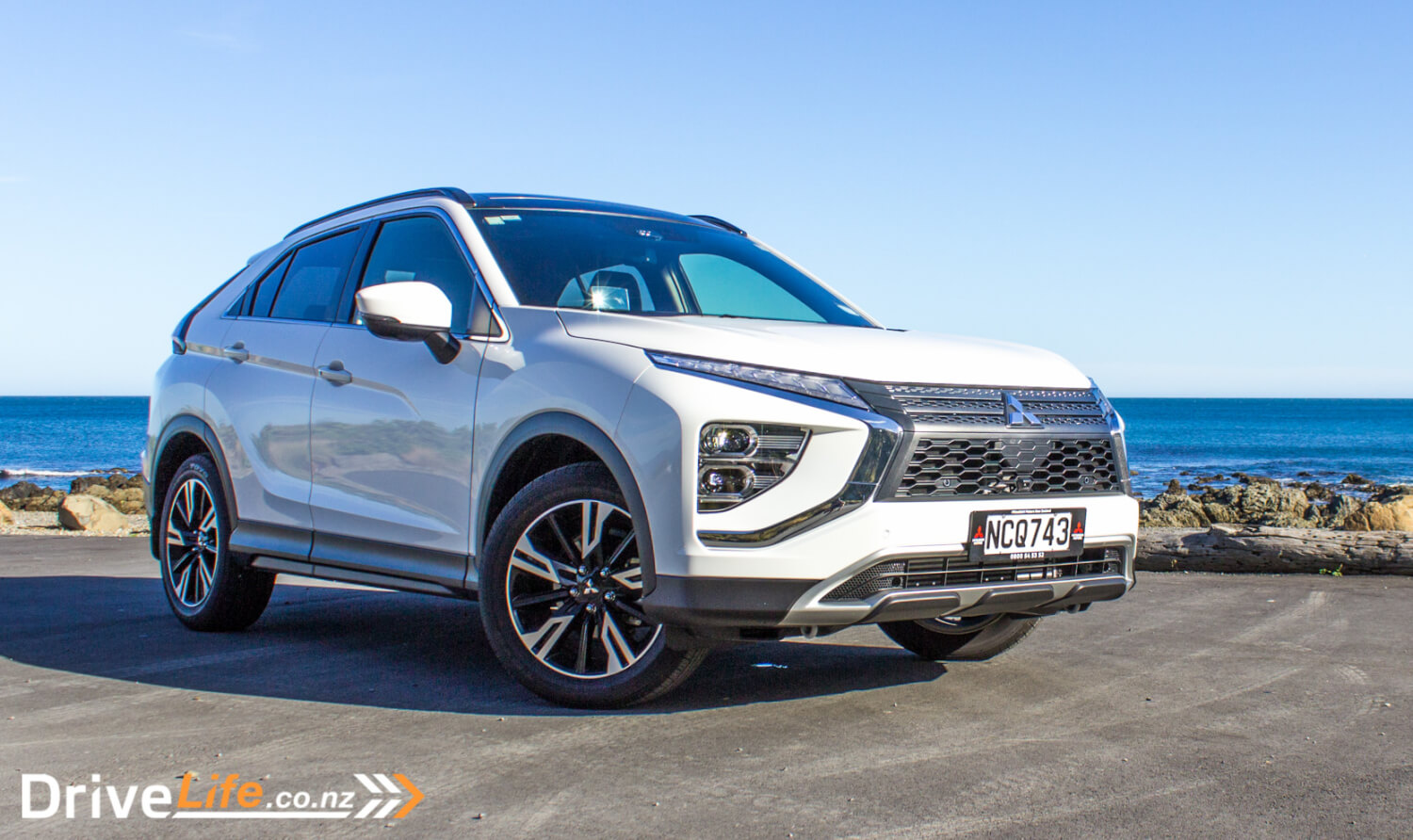
What’s In The 2021 Mitsubishi Eclipse Cross Range?
The Eclipse Cross range is offered with two trim levels, the base-spec XLS and the top-spec VRX, configured with either 2WD or 4WD. This means there’s four total Eclipse Cross models to choose from. These are priced below;
| 2WD | XLS | $35,990 |
| VRX | $41,990 | |
| 4WD | XLS | $37,990 |
| VRX | $43,990 |
Even in the base XLS specification, the Cross offers a decent array of features including 18’’ alloys, 8″ infotainment with Apple CarPlay and Android Auto, 6-speaker audio, cloth seats, Push Button Start/Stop, Keyless Entry, Rain Sensing wipers, power-folding mirrors, LED taillights and daytime running lights, auto high-beams, automatic climate control and cruise control.
There’s also plenty of safety tech onboard, including; 7 airbags, Blind Spot Warning, Forward Collision Mitigation, Hill Start Assist, Lane Departure Warning, and Rear Cross Traffic Alert. All of this allows the Eclipse Cross to gain a 5-star ANCAP safety rating.
Upgrade to the VRX spec, and you’ll gain heated front and rear seats, electric front seats, adaptive cruise control, front and rear parking sensors, an auto-dimming rear-view mirror, Dual-Zone Climate Control, a heads-up display, Multi Around View Monitor (side and top-down cameras) and a tandem sunroof.
The Eclipse Cross range has one powertrain offering. This is a turbocharged 1.5-litre MIVEC 4-cylinder petrol engine, producing 112kW of power and 252Nm of torque. The engine is paired to an 8-speed CVT automatic transmission with paddle shifters.
The Eclipse Cross is offered in 7 different colours; White, Black, Silver, Grey, Brown, Blue and Red.
It’s obvious what colour our test vehicle is, isn’t it? Mitsubishi aptly calls it Cardrona. Clever!
For more information on the Eclipse Cross, check out Mitsubishi NZ’s website.
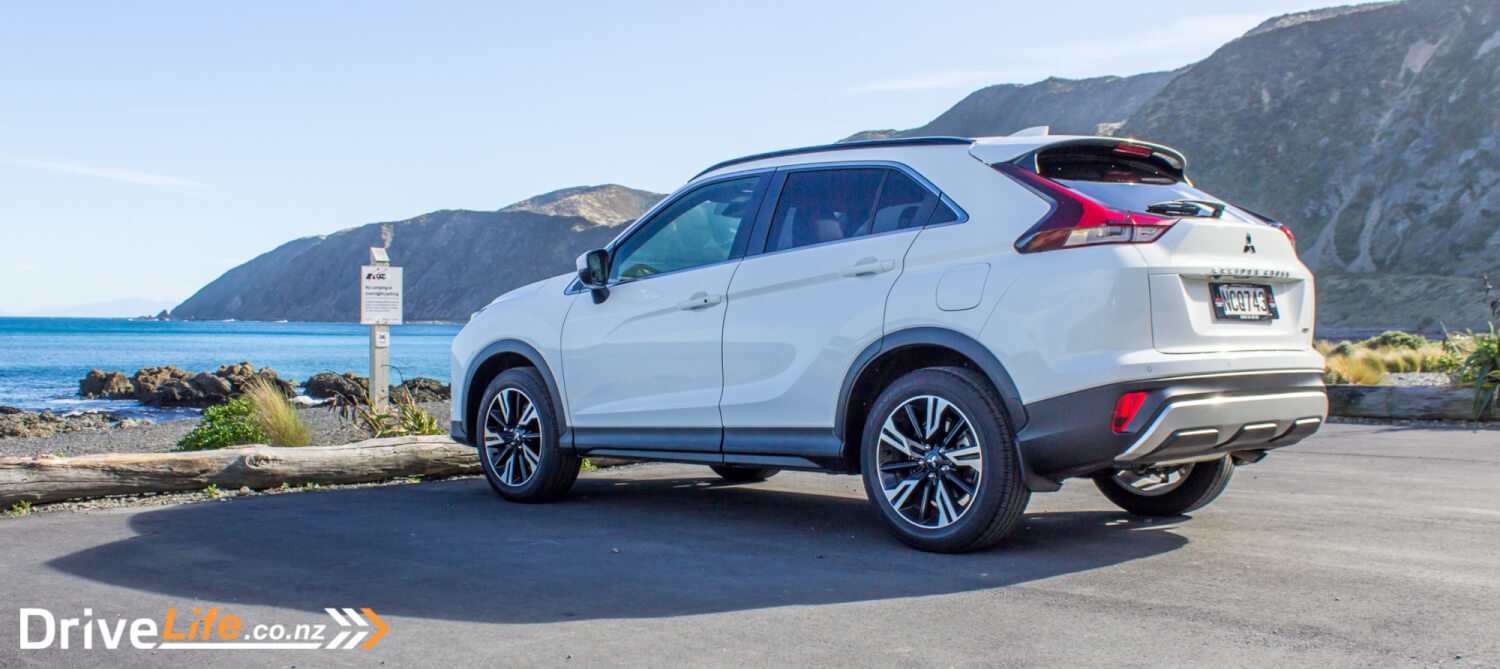
First Impressions Of The 2021 Mitsubishi Eclipse Cross VRX
Mitsubishi appears to have invested a decent amount of effort into making the Eclipse Cross stand-out.
Up front, there’s Mitsubishi’s angular grille flanked with sharp LED headlights and separate recessed lamps. The doors are heavily sculpted, and there’s sharp body lines connecting to the rear tailgate which has undergone a redesign, with long LED tail lights linking up to the roofline.
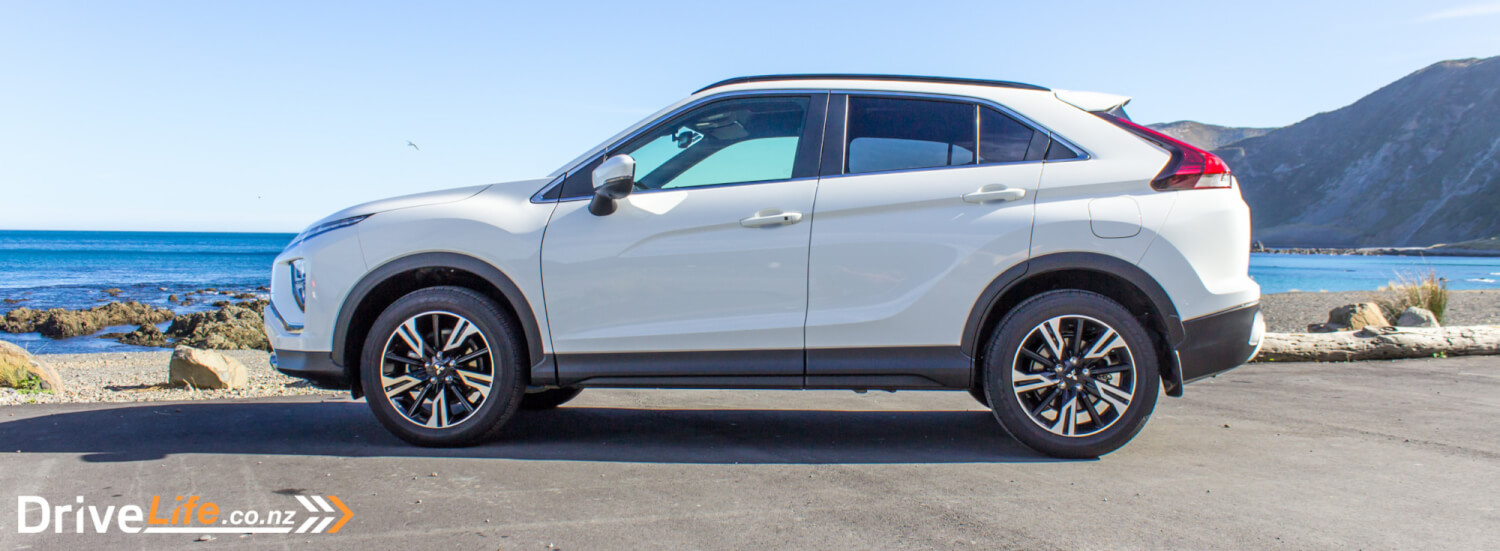
I’m grateful that Mitsubishi deleted that stupid rear light from the prior generation, which partitioned the rear window view. Although it’s less distinctive than before, it’s much tidier and doesn’t impede the view when you look out the rear.
Although it’s all heavily stylised, none of it is unpleasant. I reckon it all works rather well.
The paint quality was also good too.
Thumbs-up from me, Mitsubishi.
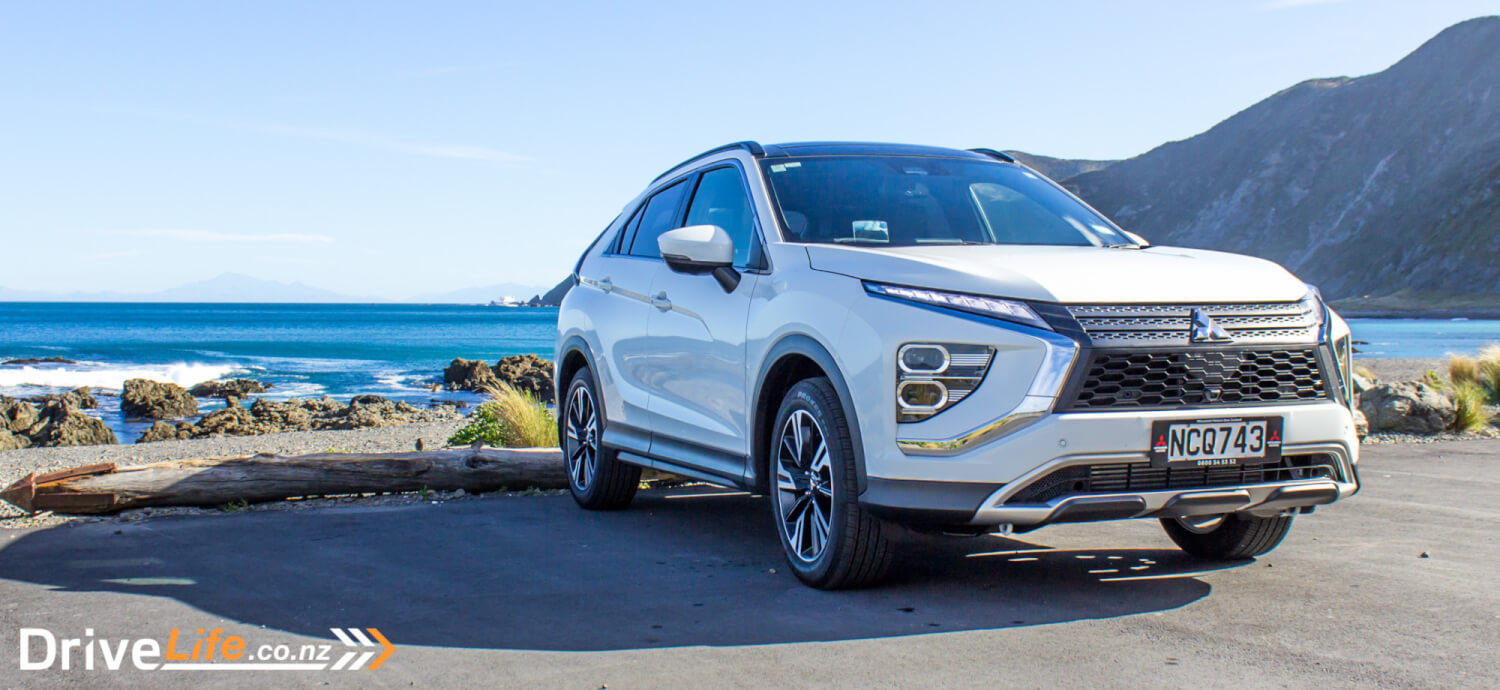
What’s The Interior Like On A 2021 Mitsubishi Eclipse Cross VRX?
You’d be forgiven for thinking that the Eclipse Cross was a few years old when first stepping inside the cabin. In an era where everything is seemingly moving towards touch controls and integrated screens; Mitsubishi keeps it suitably analogue.
In other words, there’s plenty of buttons inside the Eclipse Cross. That might sound like a bad thing, but it’s actually the complete opposite.

There are several vehicles which spring to mind that have been quick to adopt screens in place of physical controls. Trouble is, many of them are clunky and difficult to interact with on the fly. The Eclipse Cross doesn’t have this problem; it’s a familiar format, and you know it’ll work.
Even though there are plenty of buttons, the overall interior layout is relatively tidy. Many of the materials inside the cabin are hard plastics, with a few contrasting colours to keep it visually interesting. There’s some gloss black plastic on the centre console, door handle surrounds and steering wheel. It’s important to note that gloss black plastics in any car are generally easily scratched. Our test car was already showing some light scratches on it.
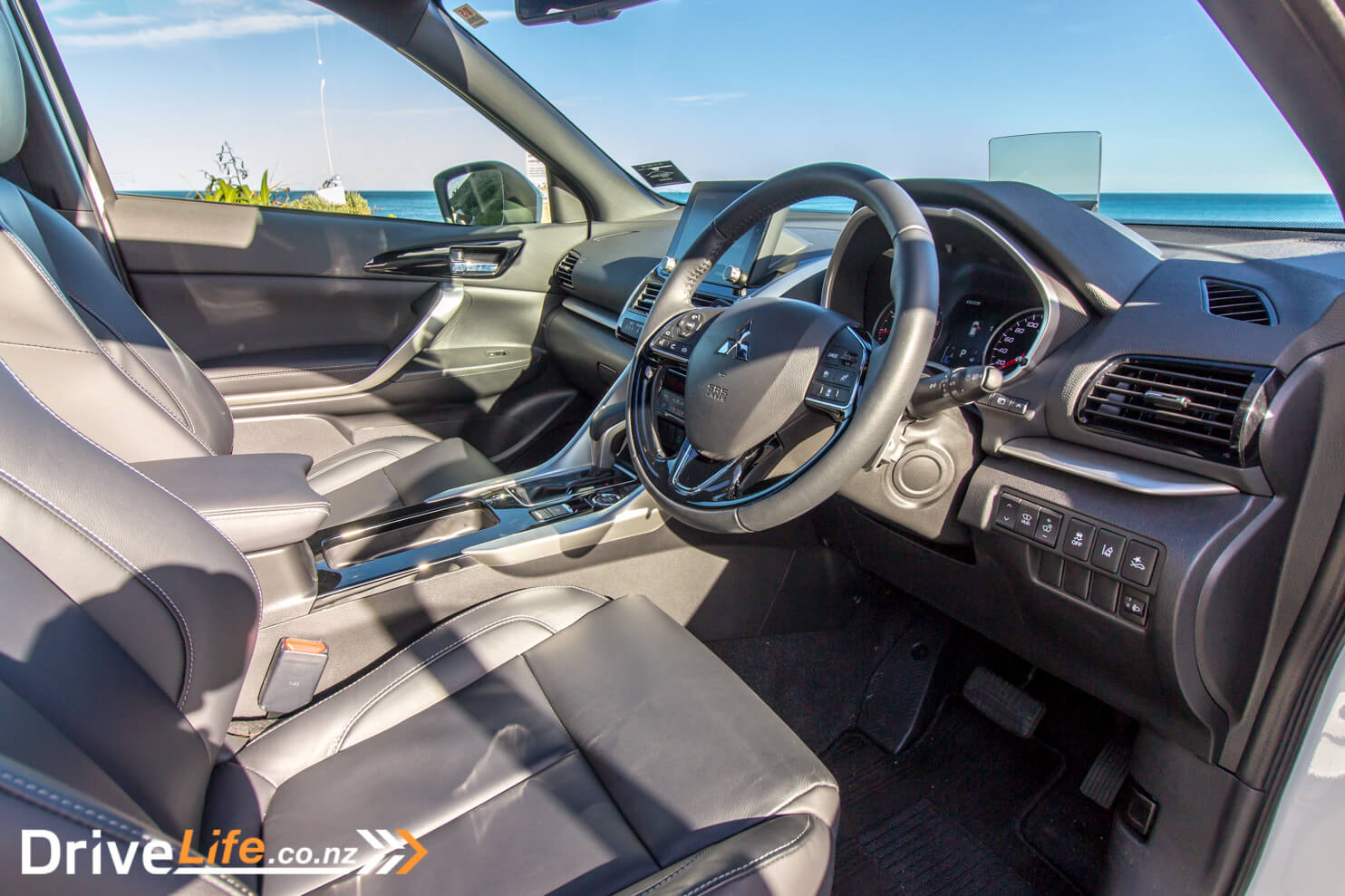
Despite this, gloss black is much better than faux carbon-fibre wrap, which Mitsubishi has used to wrap the window controls and behind the infotainment screen. Mitsubishi is one of the worst offenders for faux carbon wrap in their new cars. As you can probably tell, I’m not a fan.
So the Eclipse isn’t a luxury car on the inside, but would you expect that for the price? Besides, the plastics aren’t low quality and it means it’s relatively child-proof.
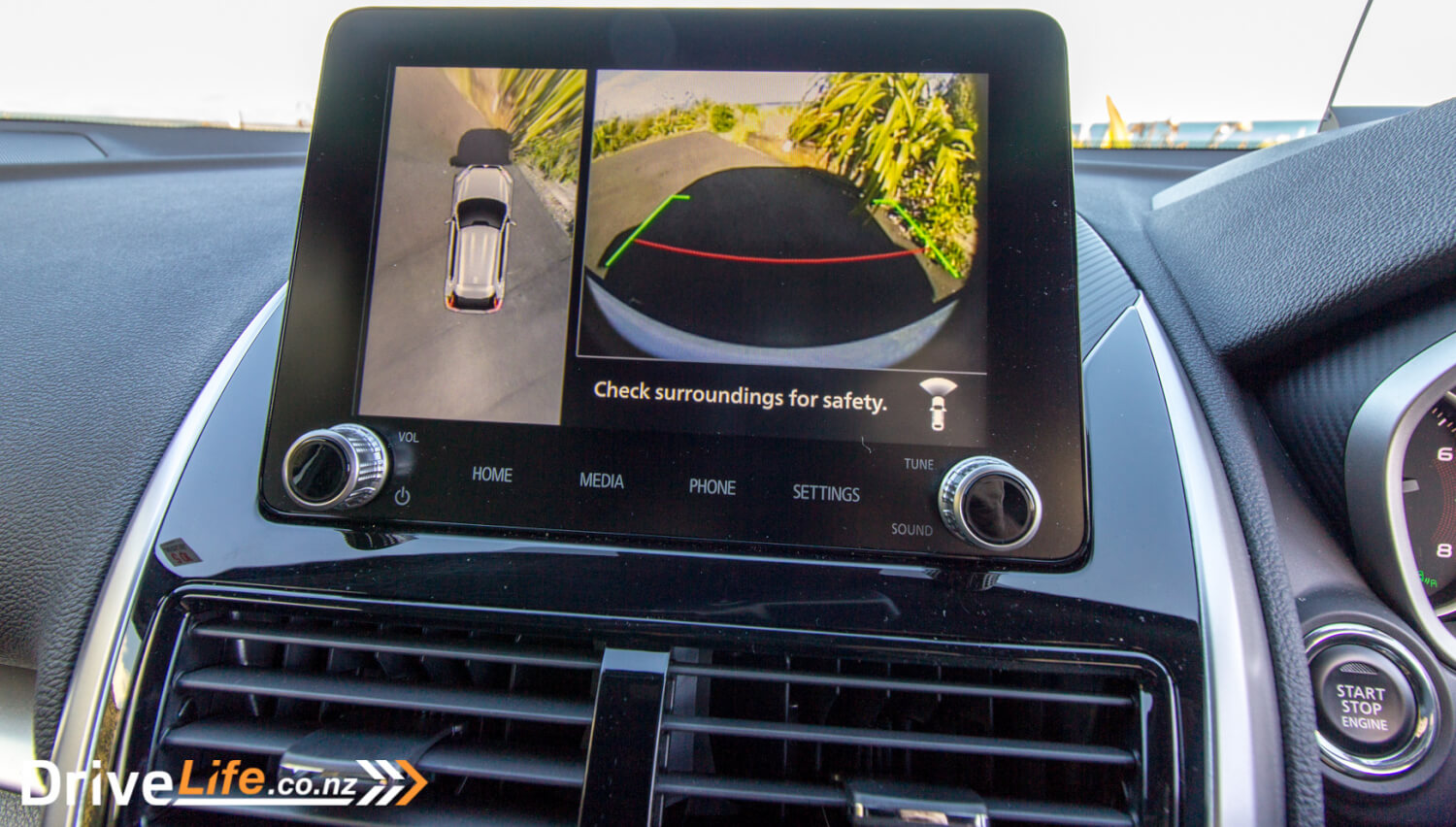
Tacked onto the dash is an 8’’ infotainment screen, adding an extra inch from that on the old vehicle. The new unit also ditches the old trackpad, going to a full touch interface.
The system alone does the basics well. It doesn’t have the flashiest UI, nor does it offer the crispest resolution. However, it is highly responsive to touch and doesn’t noticeably lag between menus.
Our test vehicle is also gifted with a series of cameras, which gives you all the nifty side-views and top-down views of the vehicle via the infotainment. Mitsubishi calls this Multi-Around View Monitor. It’s impressive to see these offered at this price point, but it’s a pity the resolution of the cameras is not particularly good.
Adding to the list of trick features is the heads-up display, which surprise-surprise, has a button to operate. The Cross uses an older design, where the heads-up display is projected onto a piece of plastic which rises up from the dash, instead of projecting directly onto the windshield. Because the display is limited to that small piece of glass, I couldn’t position it where I wanted it, even after adjusting it. I ended up driving with it off most of the time.
Perhaps the most annoying feature inside the cabin was with the instrument cluster, specifically with the trip computer. It doesn’t read out average fuel economy, instead only showing per-trip fuel economy. It suggests that Mitsubishi might be trying to hide it – more on this later.
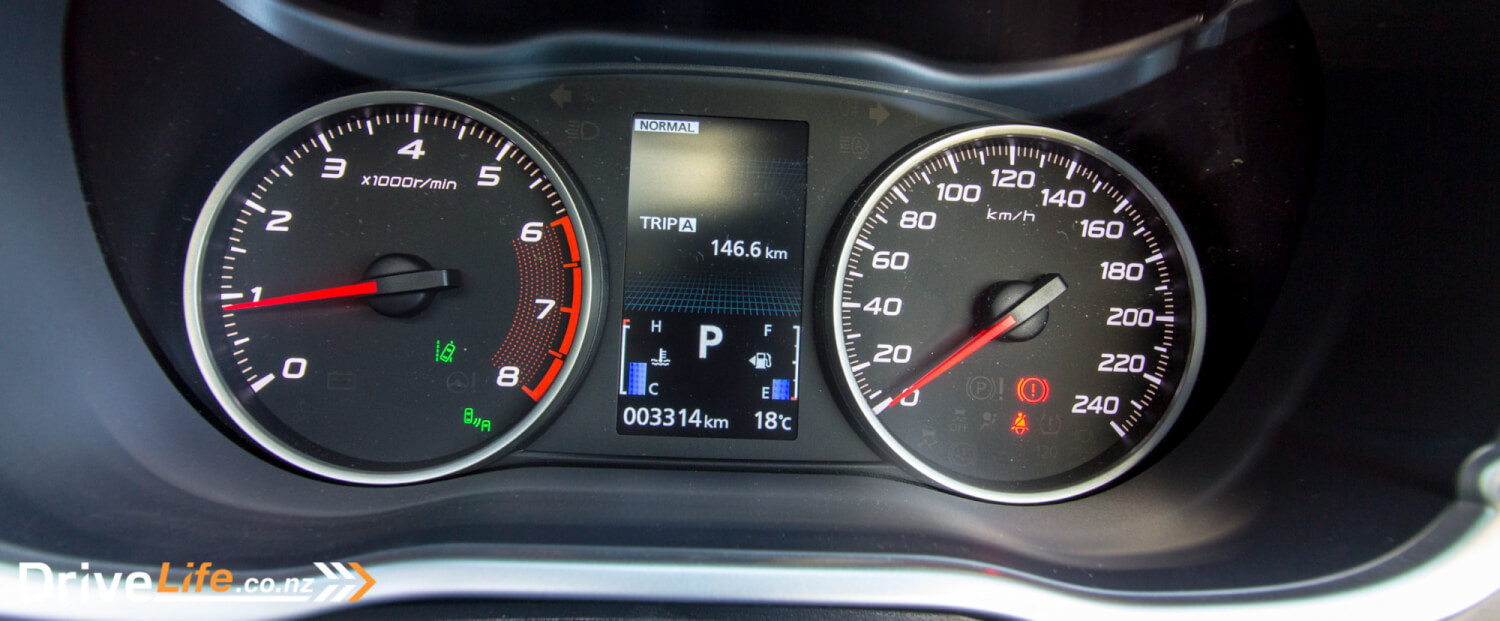
Up the front, both front seats are heated and electric. Score! It’s usually only the driver’s seat that’s powered in this price range. Once you’re done playing, you can begin to appreciate how much you can sink into these seats. They’re as friendly as an old sofa, and the centre armrest is well padded too.
These seats are probably one of my favorite parts of the Eclipse Cross’ cabin. Yet if I were to be picky, I’d request the ability to adjust the lumbar support.
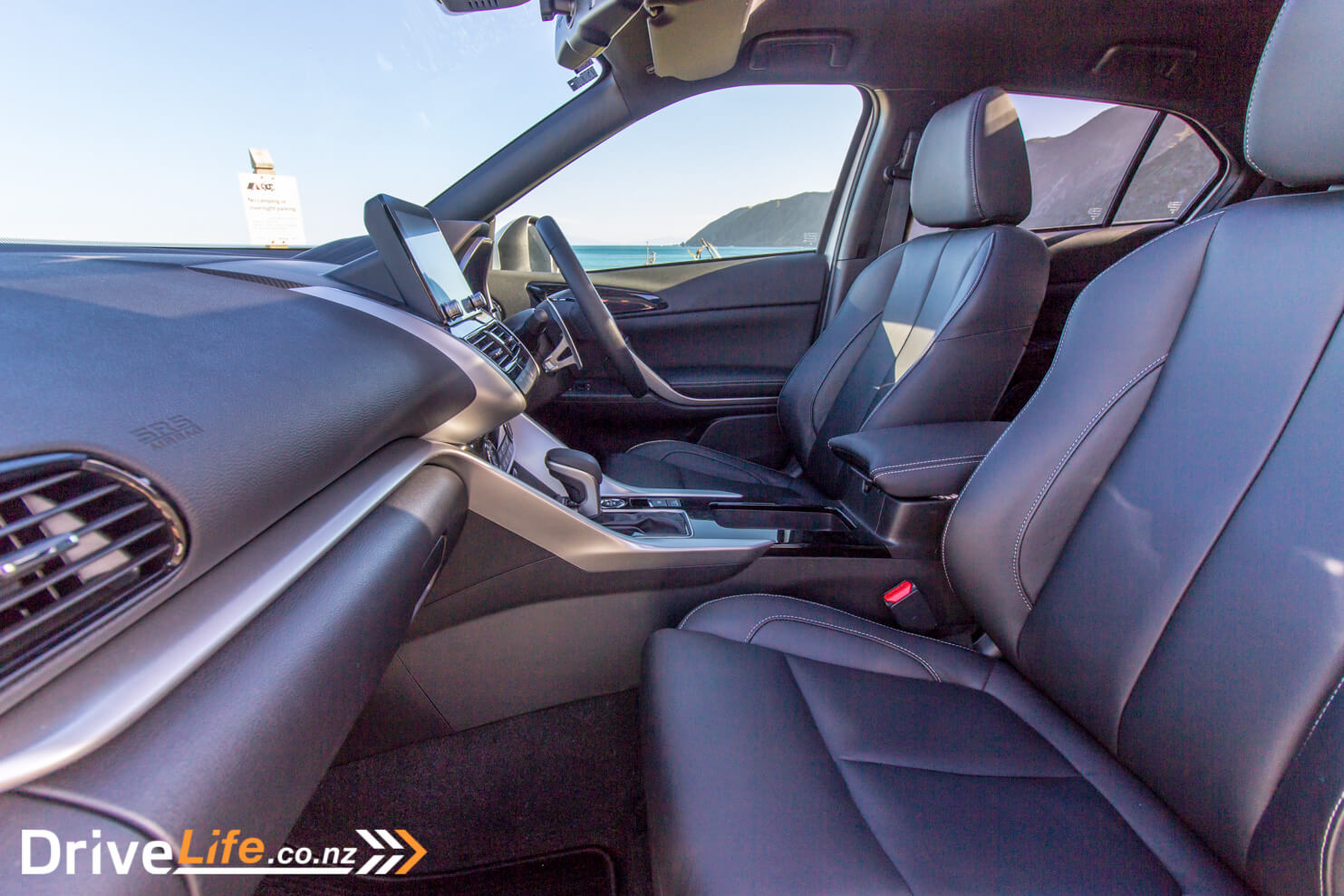
Moving to the back, the rear passenger seats are heated and there’s also an abundance of leg-room too. Great! So, the Eclipse Cross will comfortably accommodate four adults? Only just.
Allow me to explain; the bases of the rear seats are notably higher relative to seating position in the front. When I sat back there (I’m 5’11 for reference), the head-room wasn’t that generous relative to the available leg-room.
So why the higher seats? Well, it does make it easier getting a car-seat in for those with a stiff back. Also, those seated back there will appreciate the higher seating position and the view out of the vehicle.
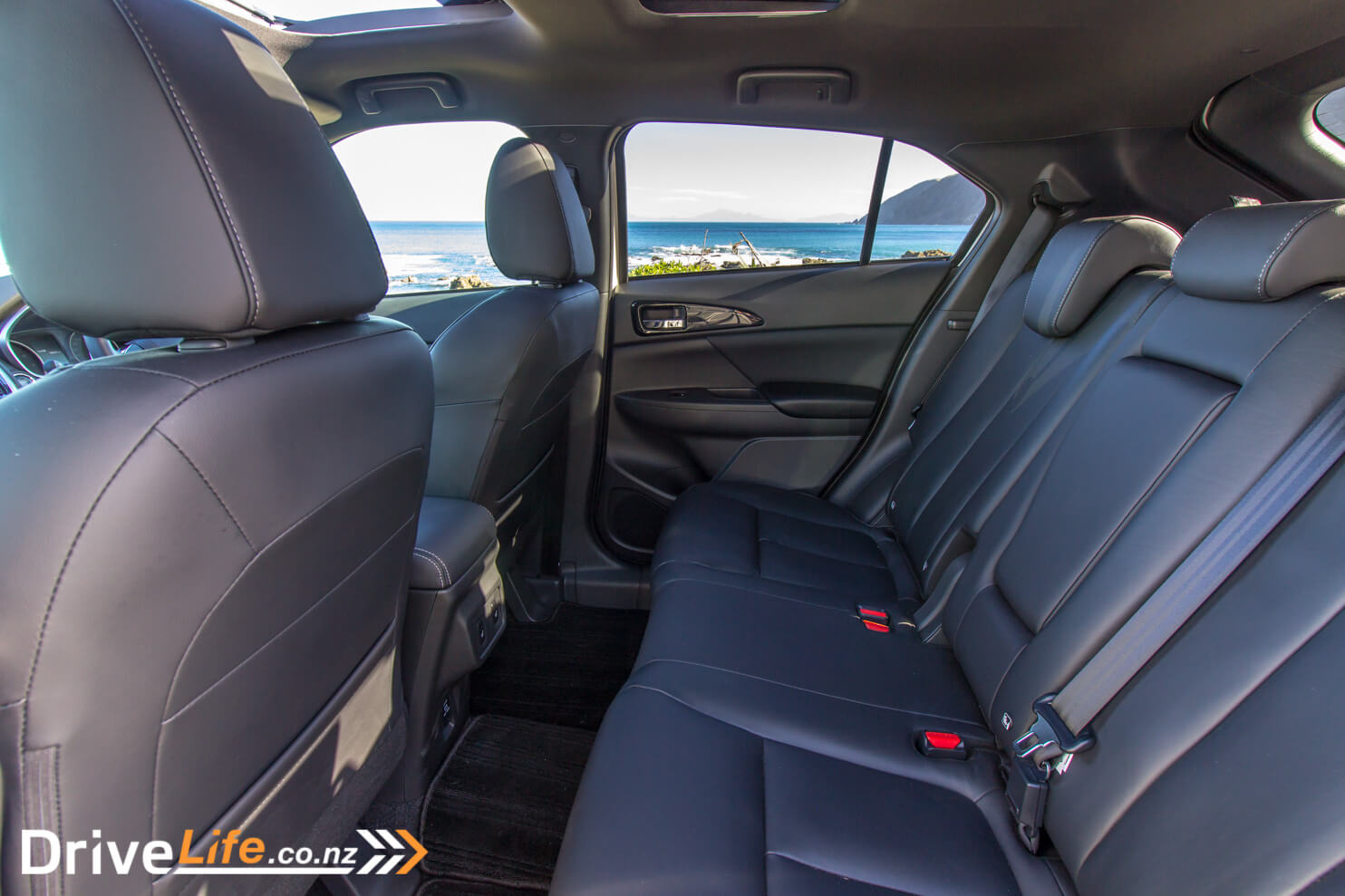
Overall, the Eclipse Cross would serve a young family to those with teenagers well, but I am more reluctant to endorse it for anything beyond that. Aside from this, the rear of the cabin is more spacious and a much better place to spend time relative to some other crossovers in this price range.
Another bonus in the rear is the tandem sunroof, which makes the cabin slightly airier. It’s worth noting that only the front sunroof opens, the rear one is simply to let light in. Funnily enough, the sunroof impedes on rear headroom by 12mm – I don’t think you’ll notice either.
The new body design also accommodates a larger boot space compared with the outgoing model. Historically, this was a minor sore point for the Cross. It offered marginally more room than the smaller crossover class, but was considerably outgunned compared to modestly larger crossovers. This model corrects that, putting space up to 405L, which is nearly 100L more than a Subaru XV.
Overall, the interior of the Eclipse Cross is good from my perspective. Its design and technology are arguably a little dated, but the Cross remains utilitarian with its approach while offering a highly respectable list of features for the price. My advice to Mitsubishi is keep the seats and ditch the fake carbon-fibre.
What’s The 2021 Mitsubishi Eclipse Cross VRX Like To Drive?
Powering the Eclipse Cross is a turbocharged 1.5-litre MIVEC 4-cylinder petrol engine, producing 112kW of power and 252Nm of torque. The on-paper figures put the Cross roughly middle of the road compared with competitors, but the torque figure is reasonably strong.
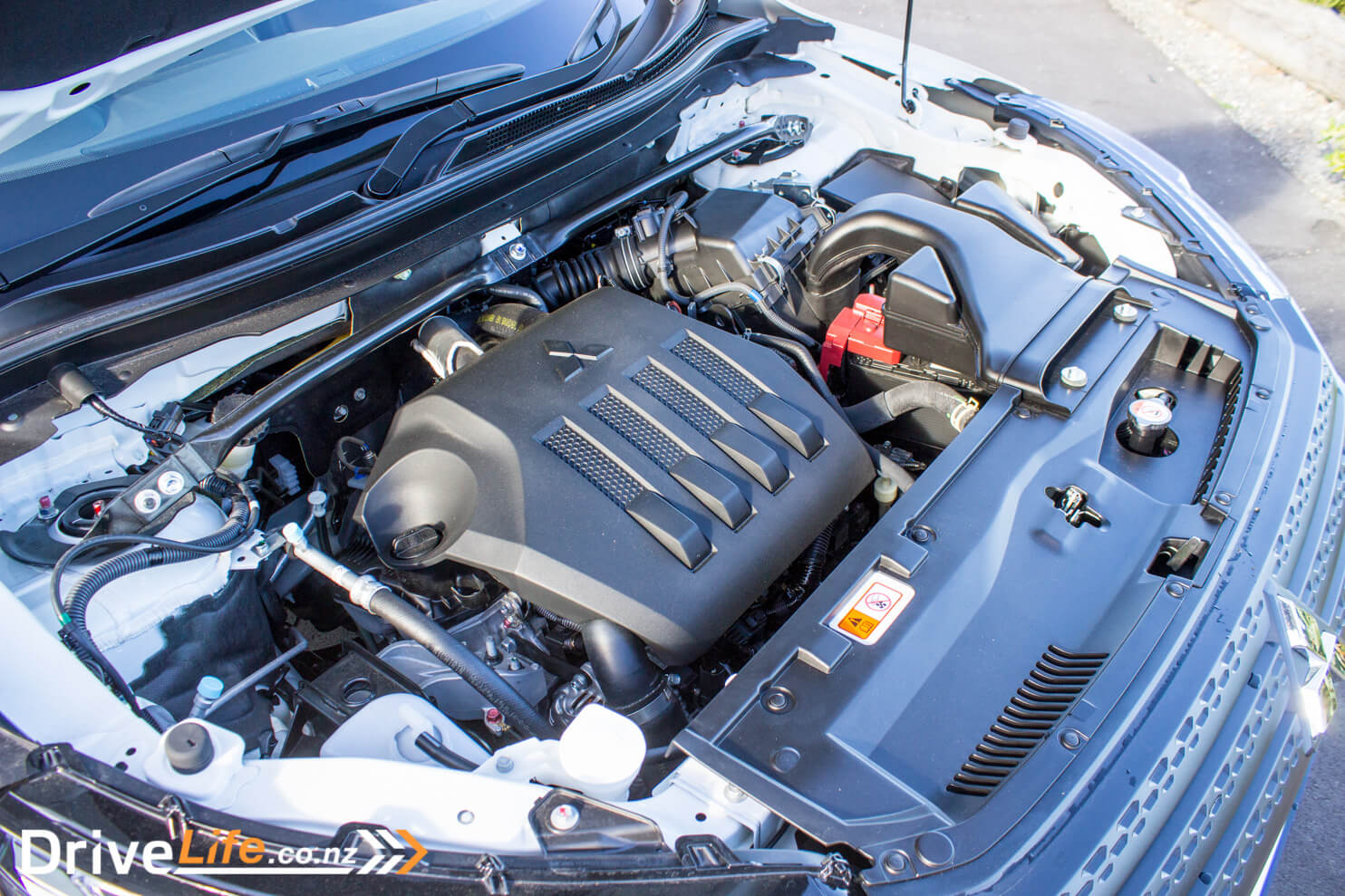
So how does it actually feel when driving? The short answer is that there’s enough performance to keep drivers satisfied. It’s neither sluggish, nor is it athletic.
The Cross’ stronger torque figures means it’s reasonably punchy in the mid-range, particularly when exiting corners. The downside is that there’s not much keeping you going beyond that.
In our review of the previous generation Eclipse Cross, we’d remarked that the same powerplant felt a bit more spirited, despite the performance specs being the same as on the old car.
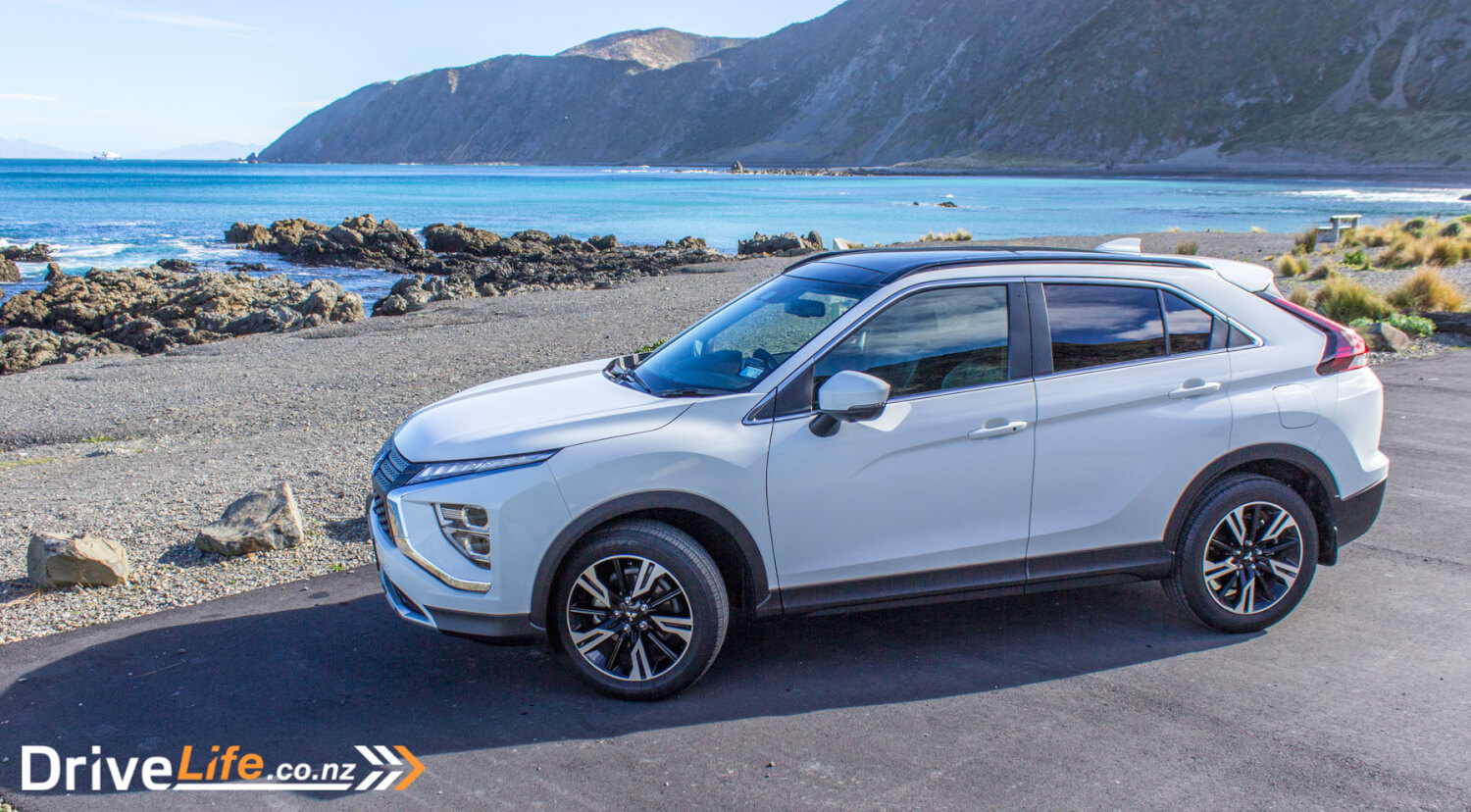
I can speculate many reasons for the difference between this model and the predecessor – perhaps better competition, or the fact this model is a 4WD – but the Cross’ performance doesn’t feel quite as strong relative to how it had previously presented itself.
Similar can be said for the CVT transmission. Mitsubishi has programmed an 8-speed stepped mode to make it feel like a conventional automatic. Around town it’s a fairly pleasant experience, but with a heavy foot, it does still introduce some CVT flaring. Overall, the CVT is neither the best nor the worst I’ve encountered. Again, it does the job in a satisfactory manner.
Aside from relatively middle of the road performance, the powertrain refinement is good, with the Cross delivering low levels of NVH. Mitsubishi has dialed in plenty of comfort into the Cross, instead of attempting a sportier set-up. In my opinion, this is exactly what you want from a crossover.
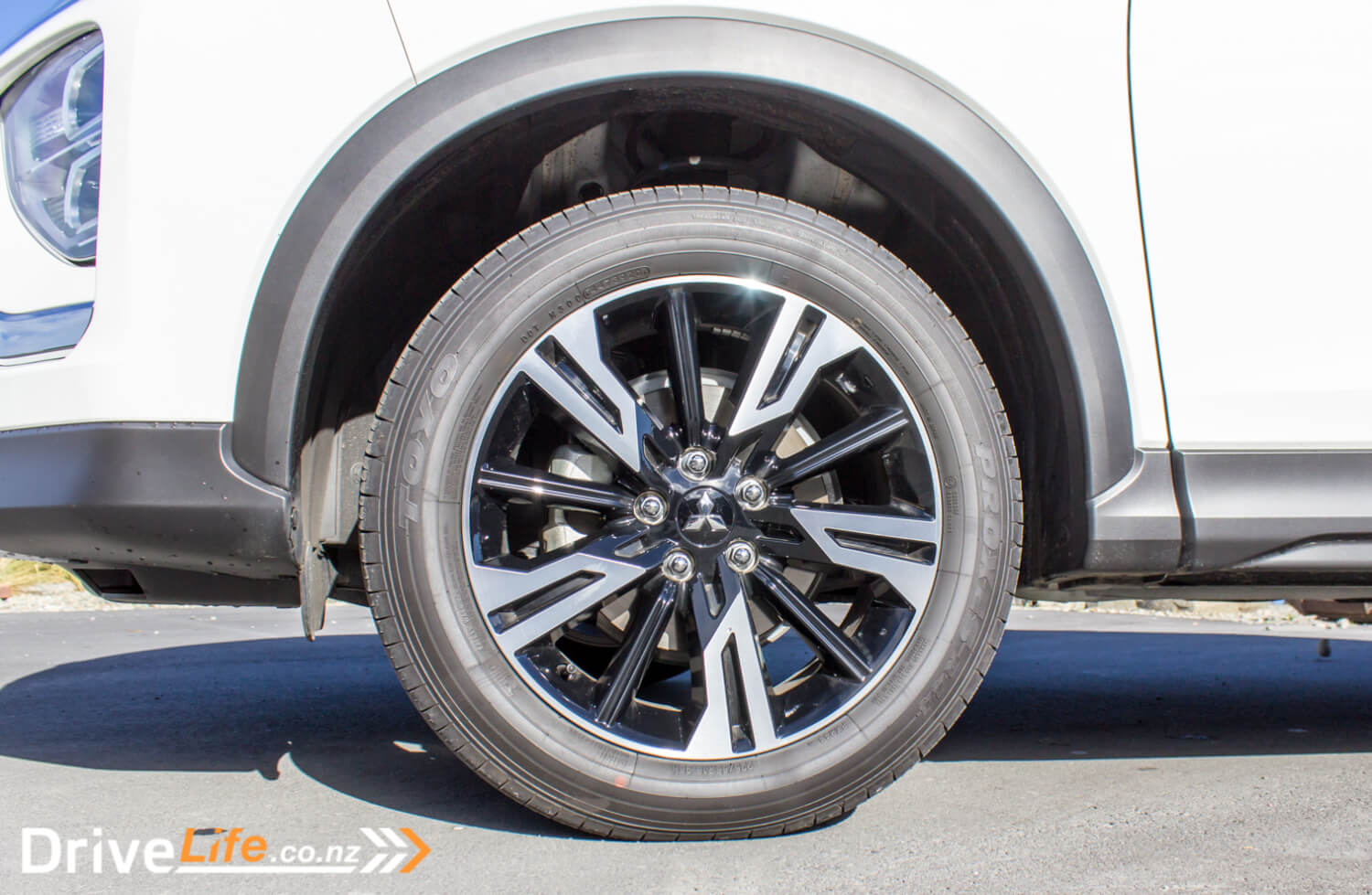
The Cross’ ride quality will impress, even across New Zealand’s varying road surfaces. My only complaint is that it can feel rather jolty going over bigger bumps, but otherwise everything is well managed. The steering is light but not flimsy, plus cabin noise is also kept impressively low.
The tradeoff of the comfort focus is that the Cross does experience a slight amount of body roll through quicker corners, but its no worse than anything else in the vehicle class. Besides, nobody who’s sane is going to be testing the limits of the Cross, yet alone any medium crossover, on a regular basis.
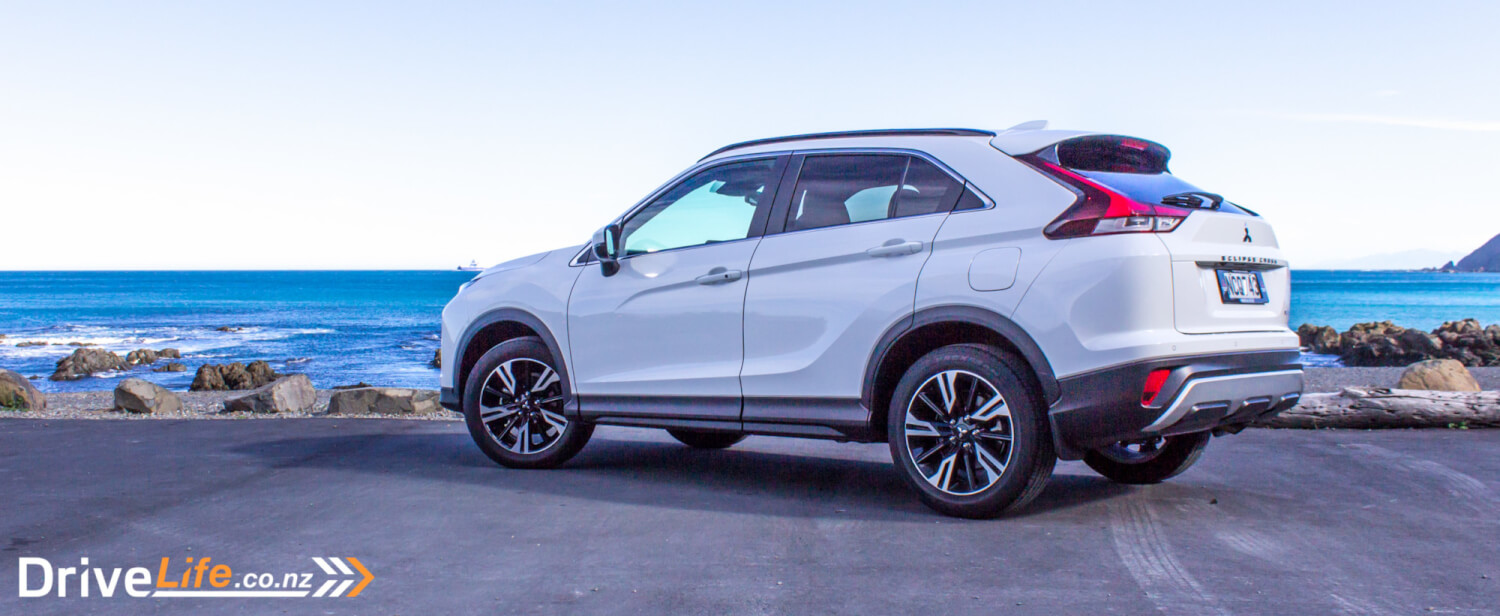
Speaking of sanity, all of the modern safety technology which is packed into many modern vehicles can sometimes test it. However, I’m happy to report that the driving assistance technology in the Eclipse Cross is largely hassle free.
A big-ticket item of upgrading to the VRX is adaptive cruise control. The system works down to a halt, and it’s largely free of any operational quirks. In my opinion, any vehicle with adaptive cruise which works to a halt is worth the upgrade, assuming you needn’t sell any vital organs to gain the luxury.
The Eclipse Cross also does not feature any sort of lane centering assistance either. Although other vehicles in this segment are starting to gain this tech, seldom do they ever work flawlessly. If anything, I was happy the Mitsubishi didn’t have this on-board. However, your opinion might vary.
Some of the more annoying technology isn’t directly related to driving assistance, and was referenced earlier in the article. Specifically, the HUD is an older design, projecting onto a separate piece of plastic as opposed to the windshield, meaning its adjustability is limited. The trip computer also makes it difficult to find the average fuel economy.
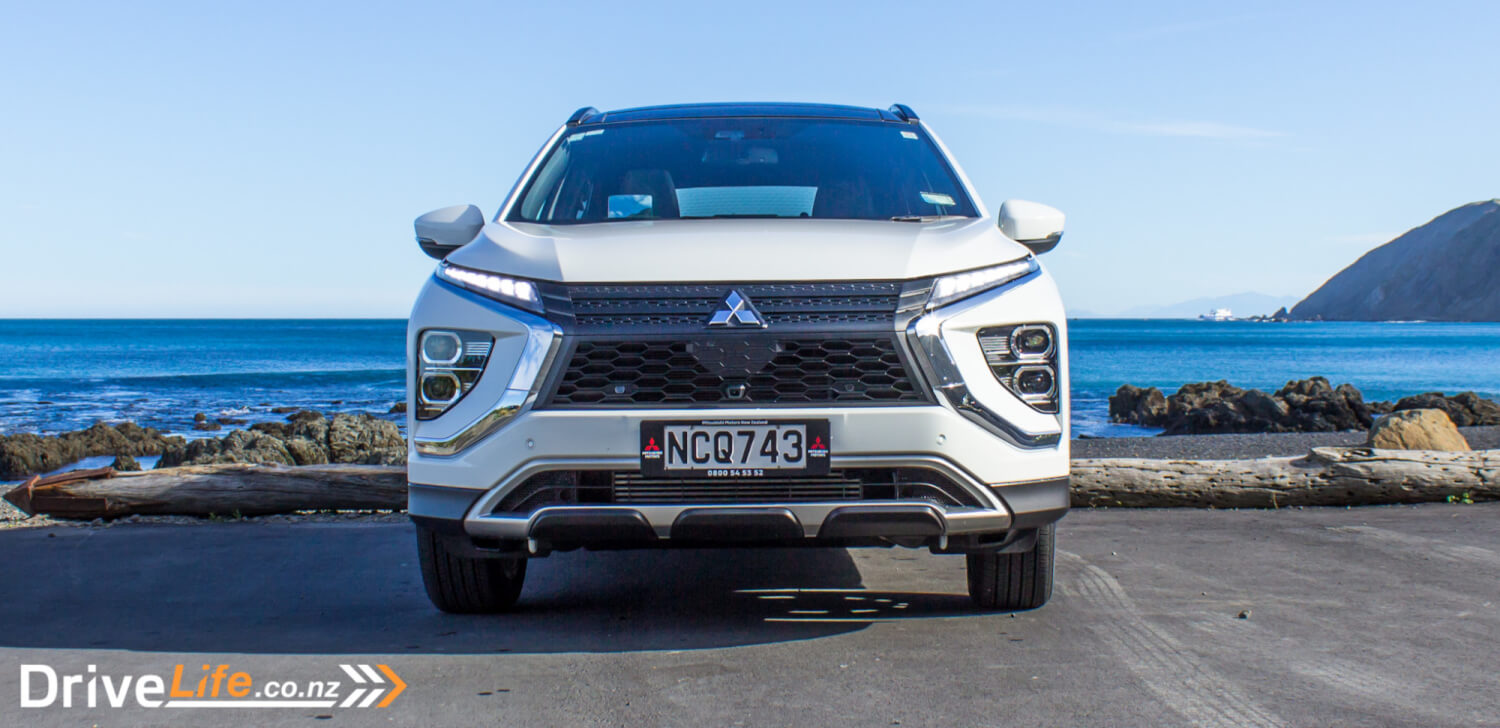
Once we did eventually find it via the infotainment screen, we had an average fuel economy result of 8.5L/100kms for the time Fred and I had the Eclipse Cross. We both spend a decent amount of time on motorways. Expect to run into the 9-litre range for around town driving.
Finally, you need to press a button at the end of the indicator stalk to activate the auto beams. The beams default to being off when you start the car too, meaning you need to activate them every time you start the car. It defeats the purpose in my opinion.
Fred’s View
I drove the first-gen of the Eclipse back in 2018. It was a good, small-medium SUV. That little turbo 1.5 motor impressed me and overall, it was a very good car. For 2021, I jumped into the new gen Eclipse after Alistair had driven it.
It was all very déjà vu. Sure, it looks more modern and ‘Mitsubishi’ now but the interior feels mostly the same. The drive too didn’t feel too much different. It’s still quite smooth, quiet, and comfortable. It drives well, and I couldn’t see any owner not liking the car immensely.
It’s no rocket, but it doesn’t look outlandish, and it’s not expensive. For a lot of buyers that’s two of the big boxes ticked off straight away. I can’t see any Eclipse owner being unhappy with the car. It’s a rock-solid allrounder that works well as a commuter.

What’s The Competition For The 2021 Mitsubishi Eclipse Cross VRX?
The crossover SUV market has become so saturated, that each one encroaches closely on the model next to it. The below list contains a number of SUV competitors, which fit between the medium to large crossover segment. The Eclipse Cross closest competitors on this list are the Subaru XV, the Mazda CX-30 and Hyundai Kona and Kia Seltos.
| Brand/Model | Engine | Power (kW)/Torque (Nm) | Fuel, L/100km (claimed) | Seats | Boot Space, Litres | Towing Capacity, Kg | Price Highest to Lowest |
| Seat Ateca FR | 2-litre turbo 4-cylinder | 140/320 | 6.9 | 5 | 485 | 2000 | $52,900 |
| Mazda CX-30 Limited | 2.5-litre 4-cylinder | 139/200 | 6.8 | 5 | 422 | 1200 | $50,990 |
| Hyundai Kona Limited AWD | 1.6-litre 4-cylinderturbo | 130/265 | 6.9 | 5 | 374 | 1300 | $49,990 |
| Mitsubshi Outlander VRX AWD | 2.4L 4-cylinder | 126/224 | 7.2 | 5 | 477 | 1600 | $45,990 |
| Kia Seltos Limited Turbo AWD | 1.6-litre 4-cylinderturbo | 130/265 | 7.6 | 5 | 433 | 1250 | $46,990 |
| Skoda Karoq Style FWD | 1.5 litre 4-cylinder | 110/250 | 6.3 | 5 | 521 | 1500 | $45,990 |
| Jeep Compass Limited AWD | 2.4 litre 4 cylinder | 129/229 | 9.7 | 5 | – | 1000 | $44,990 |
| Toyota RAV4 GXL AWD | 2.0-litre 4-cylinder | 127/203 | 6.0 | 5 | 542 | 1500 | $44,990 |
| Subaru XV Premium AWD | 2 litre 4-cylinder | 115/196 | 7 | 5 | 310 | 1400 | $44,990 |
| Nissan X-Trail ST AWD | 2.5 litre 4-cylinder | 126/226 | 8.3 | 5 | – | – | $44,640 |
| Mazda CX-5 GSX AWD | 2.0-litre, 4-cylinder, petrol | 115/200 | 6.9 | 5 | 455 | 1800 | $46,745 |
| Honda CR-V AWD Touring | 1.5-litre 4-cylinder turbo | 140/240 | 7.4 | 5 | 522 | 1500 | $44,000 |
| Mitsubishi Eclipse Cross VRX AWD | 1.5-litre 4-cylinder turbo | 112/254 | 7.7 | 5 | 405 | 1600 | $43,990 |
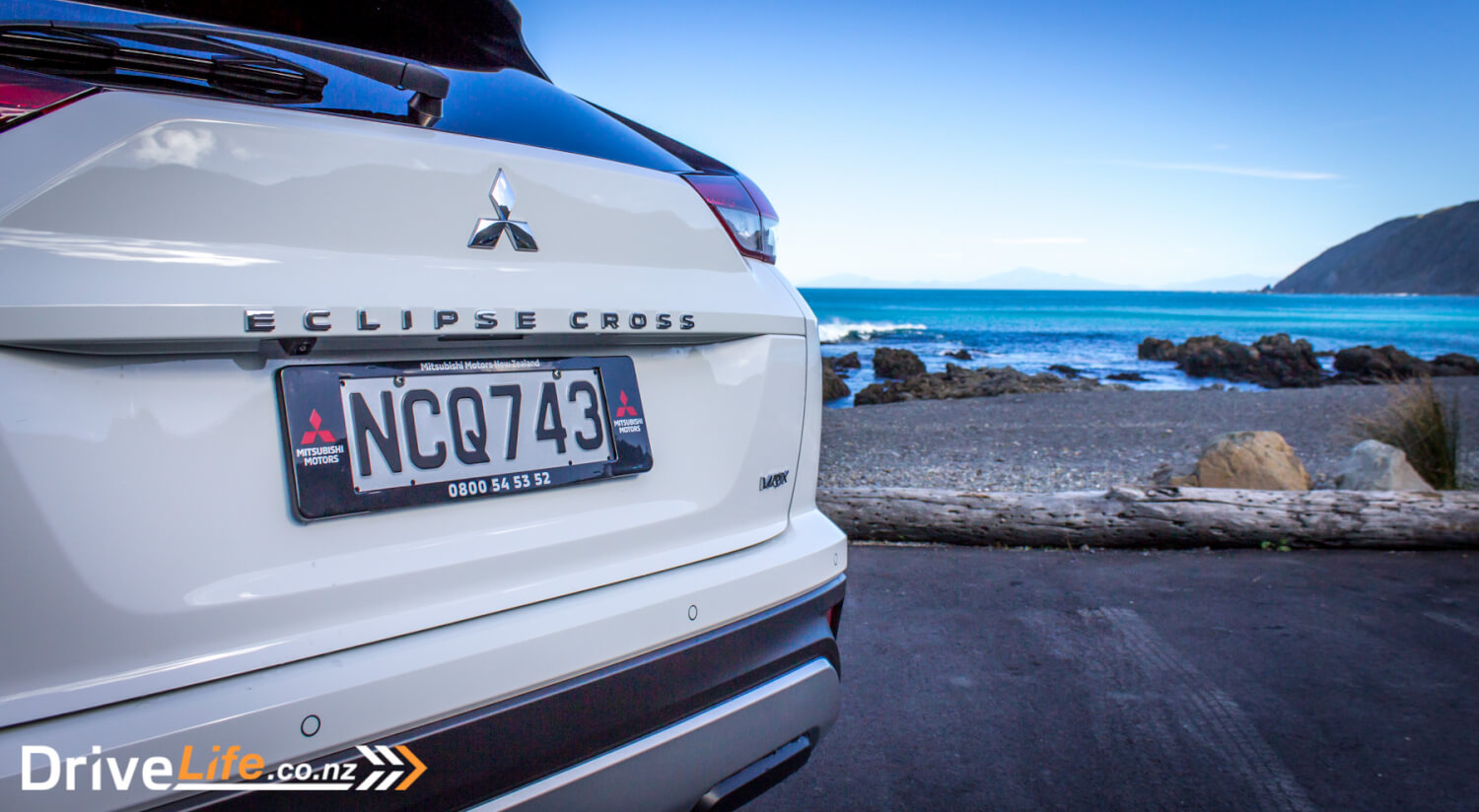
What’s The Pros And Cons Of The 2021 Mitsubishi Eclipse Cross VRX?
Pros
- Impressive equipment list for price
- Ride quality
- Quiet Cabin
- Torquey motor
- Plenty of cabin space
Cons
- Cabin materials not best quality
- Dated tech and interior design
- Can be a bit jolty over some surfaces
- Middle of the road overall performance
2021 Mitsubishi Eclipse Cross VRX – Specifications
| Price as Tested | $43,990 |
| Engine | 1.5-litre turbocharged 4-cylinder |
| Power, Torque kW/Nm | 112kW@5,500rpm / 254Nm@2,000-3,400rpm |
| Transmission | CVT with 8-Speed Sport Mode Paddle Shift |
| Spare Wheel | Space saver |
| Kerb Weight, Kg | 1,545 |
| Length x Width x Height, mm | 4545 x 1805 x 1685 |
| Cargo Capacity, litres | 405 (rear seats up) 672 (rear seats down) |
| Fuel capacity, litres | 60 |
| Fuel Type | 91 Unleaded Petrol |
| Fuel Efficiency | Advertised Spec – combined – 7.7L/100km Real World Test – combined – 8.5L/100km Low Usage: 0-6 / Medium Usage 6-12 / High Usage 12+ |
| Towing Capacity Kg, unbraked/braked | 750/1600 |
| Turning circle, metres | 10.9 Small: 6-10m / Medium 10-12m / Large 12m+ |
| Warranty | 5-year, 130,000Km New Vehicle Warranty 10-year, 160,000Km Powertrain Warranty |
| ANCAP Safety Ratings | 5 Star |
